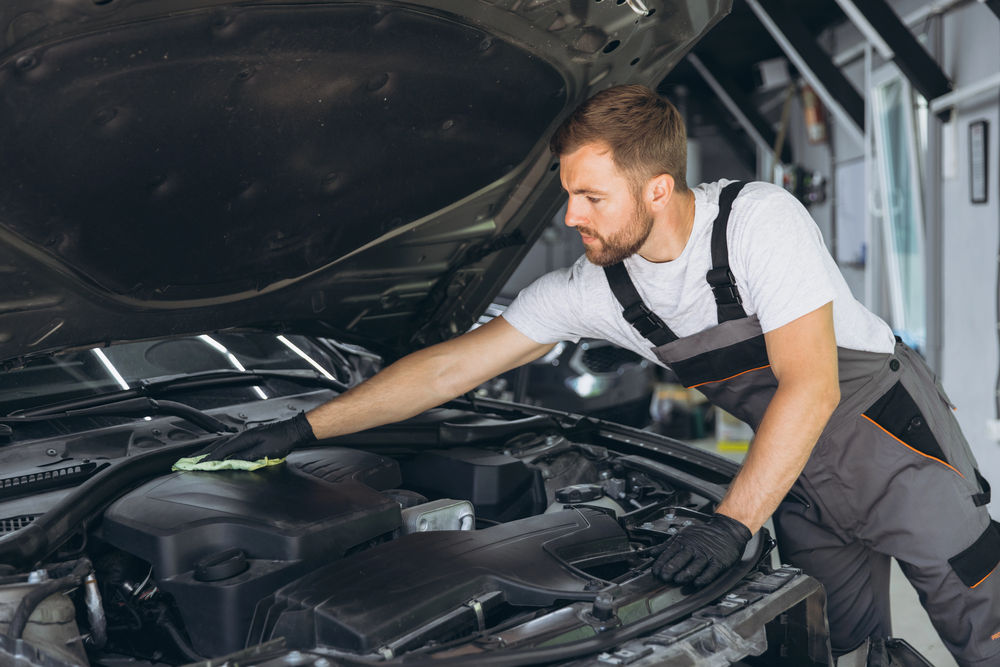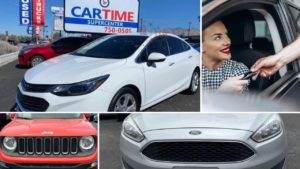Buying a used vehicle can feel exciting and overwhelming at the same time. A car is not just transportation; it is an investment in safety, comfort, and reliability. Each year, millions of drivers choose pre-owned vehicles because they offer affordability and variety.
Yet many buyers worry about making a mistake. That is why a used car inspection checklist is important. With the right steps, you can walk into a dealership or meet a seller with confidence.
Why an Inspection Matters
A used vehicle carries a history that shapes its current condition. Some cars were maintained with care, while others faced neglect. Mileage alone does not reveal the full story. How the car was driven, serviced, and stored all impacted long-term performance.
An inspection helps uncover issues that might not appear in a quick test drive. Small problems, such as worn tires or a weak battery, can be spotted early. Larger concerns, like transmission trouble, need careful observation. Knowing what to look for helps avoid unexpected repairs after purchase.
This used car inspection checklist is designed to guide you step by step. It covers what you should see, hear, and ask about before you commit.
Service Records and History
One of the first things to check when buying a used car is its history. Records reveal how the vehicle was treated through the years.
Ask to see receipts for oil changes, brake service, and tire replacements. Consistent maintenance shows that the previous owner cared for the car. Gaps in records may raise questions about hidden problems.
A vehicle history report can also help. These reports track accidents, ownership changes, and title status. While not perfect, they add context to the story.
If you buy through a trusted dealer, many records are already available. Dealerships often review the history before placing vehicles on the lot.
Interior Inspection
Step inside the car and pay attention to comfort and function. The cabin tells a lot about overall care.
Start the engine and watch the dashboard lights. All warning lights should appear briefly, then turn off. A light that stays on may point to a system issue.
Test the controls. Roll down each window, adjust the mirrors, and try the locks. Check that the seat adjustments work, whether manual or electric. Turn on the heater and air conditioning. In Tucson, air conditioning is not just a feature; it is a necessity for daily driving.
Look at the seats, carpets, and ceiling for wear, stains, or odors. A clean interior suggests regular care. Damage or strong smells could mean hidden issues like leaks or smoke exposure.
Exterior Condition
The exterior is more than paint and shine. Careful inspection here can reveal past accidents or neglect.
Walk around the car and look for dents, scratches, or uneven paint. Differences in color may signal that panels were replaced. Check that the gaps between doors, hood, and trunk are even. Uneven spacing often indicates body repairs.
Examine the tires closely. Good tires have even tread and no visible cracks. A simple test is the penny method. Insert a penny headfirst into the tread. If you see all of Lincoln’s head, the tread is too low.
Do not forget the lights. Test the headlights, brake lights, and turn signals. Replacing bulbs is simple, but broken lenses or wiring issues can add cost.
Under the Hood with the Engine Running
Pop the hood while the engine idles. This is one of the most important steps in the used car inspection checklist.
Listen carefully. A smooth hum is normal, but loud knocking, grinding, or hissing sounds signal problems. Look around the engine bay for leaks or smoke. Fluid drips may point to oil, coolant, or transmission issues.
Watch for vibrations. Excess shaking under the hood may mean worn mounts or balance issues. Pay attention to the smell as well. A burning odor is often a sign of leaking fluids or worn belts.
Under the Hood with the Engine Off
Turn off the engine and take another look. This is the time to check fluids and visible parts.
- Oil: Pull the dipstick, wipe it clean, and dip it again. The oil should look clean and amber, not dark or gritty.
- Transmission fluid: It should be pink or red, not brown. A burnt smell suggests problems.
- Brake fluid: Check the level against the markings. Low fluid could point to worn brake pads or leaks.
- Battery: Look at the battery date. In Arizona’s heat, batteries often last around four years. Corrosion around the terminals is another warning sign.
- Belts and hoses: Press gently on the hoses. They should feel firm, not soft or cracked. Belts should not look frayed or loose.
Road Test
A test drive is one of the most valuable parts of the process. Many things to look for when buying a used car show up on the road.
Begin in a quiet area. Turn off the radio so you can listen closely. Drive at low speeds and notice how the car responds. Steering should feel smooth, not stiff or loose. Brakes should stop firmly without pulling to one side.
Take the car onto a highway if possible. Accelerate steadily and check how the engine responds. Transmission shifts should be smooth, not jerky. Pay attention to any vibrations or shaking at higher speeds.
Go over a few bumps or uneven roads. A healthy suspension absorbs the impact without excessive bouncing. Listen for clunks or rattles from underneath.
Finally, check the temperature gauge when you finish. It should remain in the middle range, not climb toward the red zone.
Exterior Details Often Missed
Some small details make a big difference when it comes to buyer confidence. These often go unnoticed, but they are worth checking.
Look for rust under the car or around the wheel wells. In dry areas like Tucson, rust is less common, but still possible. Examine the windshield for chips or cracks. Even small chips can grow into expensive repairs later.
Inspect the trunk. It should open and close smoothly. Lift the mat or carpet inside to check for moisture, rust, or missing spare tire equipment. A car without a spare tire or jack can leave you stranded at the worst time.
Questions to Ask the Seller
Even with a careful inspection, you should always ask questions. The answers add context and help you understand the car’s background.
Ask how long they owned the car and why they are selling it. Inquire about accidents, major repairs, and recent service. If you are buying from a private seller, ask to see the title. Confirm it is clear and not marked as salvage or rebuilt.
Staff can explain the service history and inspection process before the vehicle was listed. This makes it easier to make an informed choice.
The Role of Market Conditions
The used car market changes based on supply, demand, and local trends. In Tucson, trucks and SUVs often have higher demand due to lifestyle needs and outdoor activities. Compact cars may appeal to students and city drivers.
Knowing these trends helps you decide how much effort to put into certain checks. For example, air conditioning performance carries more weight in Arizona than in cooler regions. Tire condition is another factor, since high temperatures speed up wear.
Paperwork and Documentation
Paperwork is just as important as the inspection itself. A clean title confirms ownership and prevents legal trouble later. Always compare the VIN on the paperwork with the one on the car. Even a small mismatch should raise questions.
Review emissions test records if required in your area. Ask for any warranties that may still be active. Some vehicles may carry manufacturer warranties that transfer to new owners. Service contracts or extended warranties can also give added peace of mind.
For private sales, confirm that the seller’s name matches the title. If a loan still exists, request proof that it was cleared. This avoids delays at the time of transfer.
Negotiation Based on Findings
Once you complete your used car inspection checklist, you can use your findings in negotiation. Small items like worn wipers or old tires can be reasons to ask for a lower price. Larger problems, such as transmission slips or oil leaks, may change your decision entirely.
Approach the conversation politely and confidently. A well-documented inspection allows you to explain your concerns clearly. Remember that you are not only buying a car, but also committing to future maintenance costs.
Red Flags That Should Not Be Ignored
Some issues are too serious to overlook. Flood damage, frame damage, or a branded title can create long-term problems. If the car shows signs of hidden damage or the seller avoids questions, it may be better to walk away. It is always better to wait for the right vehicle than to take on expensive risks.
Drive Home Confidently with Car Time Supercenter
Car Time Supercenter believes buying a used car should feel secure and stress-free. Our 40+ years in Tucson mean every vehicle we offer is carefully inspected with your safety in mind. From trade-ins to flexible financing, we help families find the right fit.
Explore our large selection of used cars for sale in Tucson, AZ, or if you are ready to sell your car, we make that process simple too.

There are good reasons people will buy their next used car in Tucson from Car Time Supercenter. But I think we are one of the most trusted used car dealerships mainly because we treat everyone like family. My family has provided quality, dependable local used cars to Tucson customers since 1984, and I’m proud to be a part of our continued success.
Like many family-owned businesses, I grew up going to work with my dad. Falling in love with cars was natural because of my father’s passion, and eventually, I came to love the car business just like him. I officially joined the Car Time Supercenter team in 2012, starting in the finance department. Over the past decade, I’ve learned the used car business and how to treat customers from my family and industry resources.
Today, I oversee marketing, social media, inventory, and reconditioning, so I play an essential role in delivering local Tucson used car buyers the best experience possible. I also help our family business keep up with the times while providing old-fashioned customer service. From attending NADA classes to becoming Allstate certified for back-end products, I continue to learn and add skills to serve our customers better.




